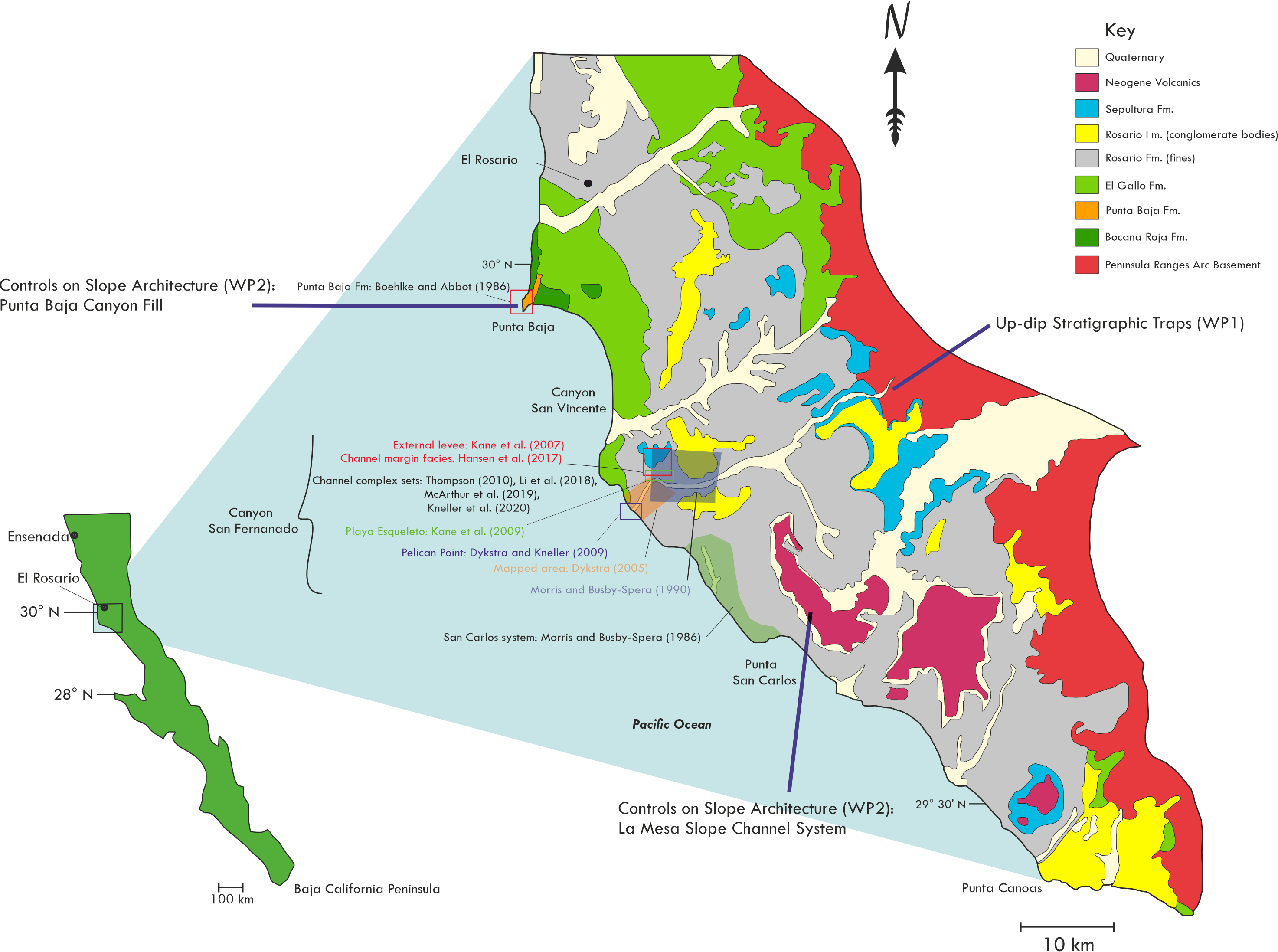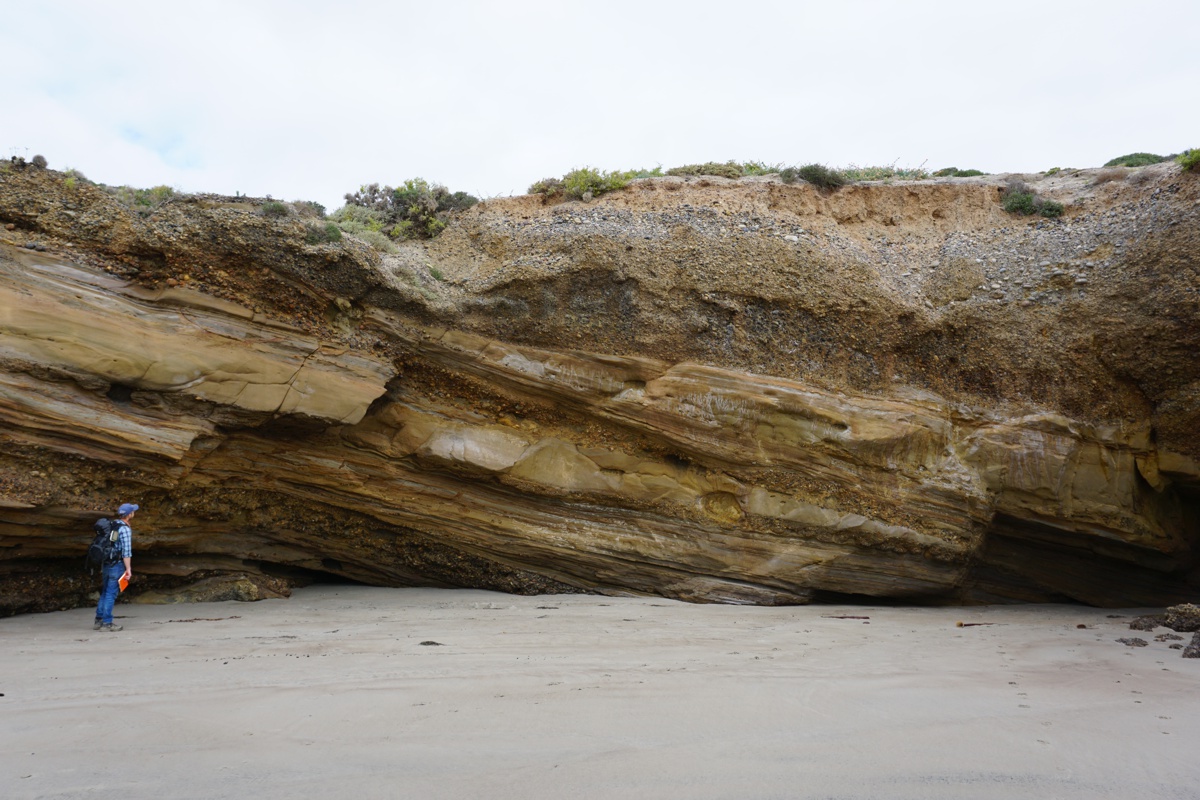Slope Phase 5 Overview

SLOPE Phase 5 is a 3-year research project, which leverages the knowledge and insight developed during earlier phases of the SLOPE consortium. SLOPE Phases 1-4 saw the development of powerful predictive models for deep-water reservoirs from exploration- to development-scales, including quantitative datasets on architecture, geometry, facies, net:gross and reservoir connectivity. Outcrop studies of exceptionally well exposed seismic-scale systems in the Karoo Basin, South Africa, have included direct calibration to research boreholes (core, image logs and wireline logs) at depositional sequence and composite sequence scales. The conceptual models of Phases 1-4 are being used across the industry worldwide to reduce uncertainty in exploration and development projects.
SLOPE Phase 5 has two themes, each delivered via a series of inter-related work packages.
Theme 1, GLOBAL EXPORTABILITY OF SLOPE SYSTEM ARCHITECTURE, will critically compare and test the models developed in Phases 1-4 against key variables found in other sedimentary basins, to measure the generic applicability of the Karoo analogues globally and therefore to constrain uncertainty and reduce risk. These variables include a wider grain-size range, different tectonic settings with different subsidence mechanisms/rates, and combinations of syn-depositional tectonics and residual structural topography; a wider range of flow processes, including systems dominated by supercritical flows, and systems inferred to have been fed by hyperpycnal river input; greenhouse climate settings (Karoo was icehouse-greenhouse transition) and wide palaeo-latitudinal settings. Particular attention will be paid to thin-bedded pay, by extending the recognition criteria for distinguishing different thin bed depositional environments and developing machine-learning approaches based on core and image log data from behind-outcrop wells. The effect of permeability distribution on likely recovery will be investigated using fluid flow modelling.

Theme 2, MULTISCALE ANALYSIS OF SLOPE-CHANNEL RELATED STRATIGRAPHIC TRAPS, will work from system-scale pinch-out down to sub-seismic bed-scale facies changes, including Karoo and Ainsa core datasets, to better understand requirements for trap development and preservation of trap integrity. Fluid flow simulation of the outcrop architecture will investigate strat trap integrity and leakage potential. Seismic forward modelling integrated with outcrop studies will constrain the actual facies and architecture at and below the resolution of seismic mapping.

Three principal outcrop study areas include 1) the Cretaceous Punta Baja Fm. and Rosario Fm. canyon and channel-levee systems of Baja California, Mexico; 2) the Austral Basin, Tierra del Fuego, Argentina; and 3) the baseline control of the Karoo Basin, South Africa. We will also integrate key results from recent work in other deep-water basins such as the confined Annot, Ainsa and Jaca systems.
Four work packages have been designed to cut across scales of observation and data types in the programme themes:
WP1. Slope-channel related stratigraphic traps
WP2. Controls on slope channel architecture and hierarchy
WP3. High resolution seismic and fluid flow modelling of facies and connectivity
WP4. Embedding project results in sponsor workflows
Principal Investigators Stephen Flint, David Hodgson and Ian Kane are supported by a post-doctoral researcher (Euan Soutter), two PhD students (Max Bouwmeester and William Taylor) and experienced deep-water researchers (Brunt, Hubbard, McArthur and Poyatos-Moré). The project will run from March 2020.
Work packages 1 and 2 are currently well underway, with the inaugural field season which took place in Mexico, March 2020. The field season focussed on the excellent 3D exposure of the Punta Baja Canyon system, and the interfingering nature between channel axis and margin sandbodies, but was unfortunatly cut short by the Covid-19 pandemic.


